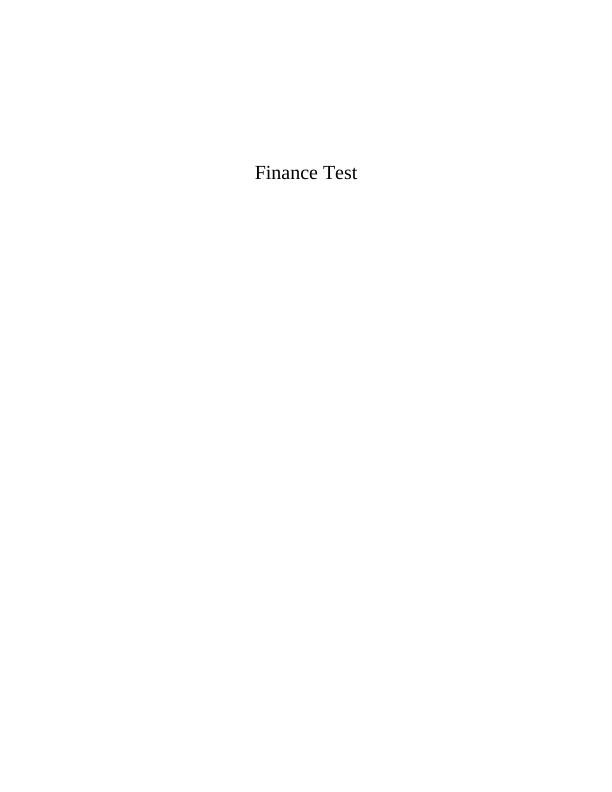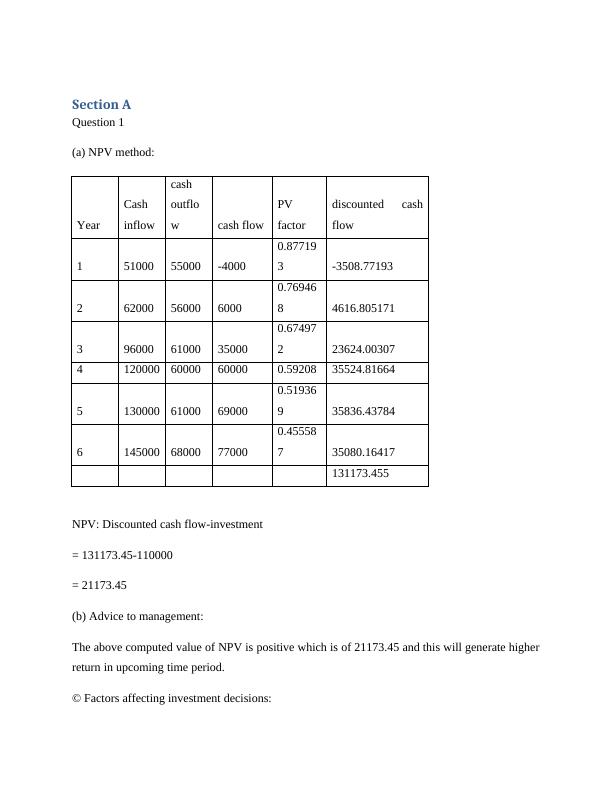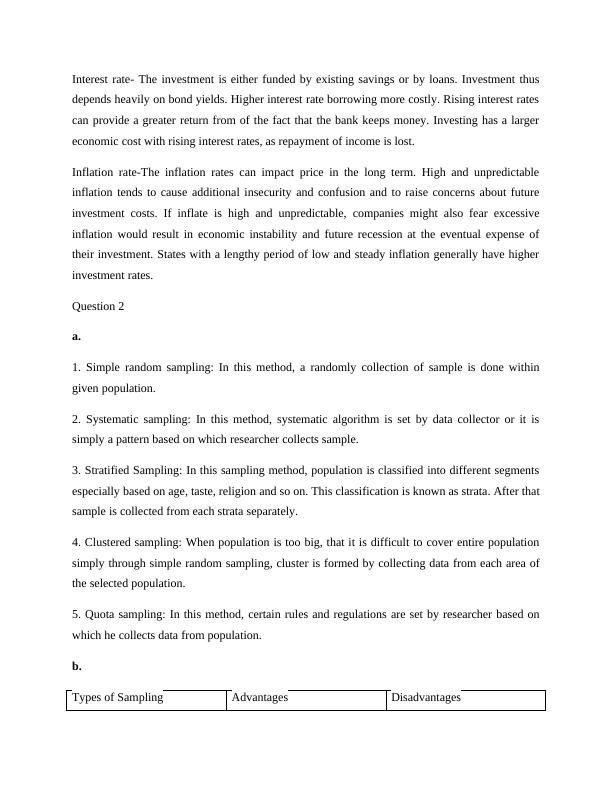Finance Test
Added on 2022-11-24
12 Pages1336 Words210 Views
Finance Test

Contents
Section A......................................................................................................................................................3
Section B......................................................................................................................................................4
Section A......................................................................................................................................................3
Section B......................................................................................................................................................4

Section A
Question 1
(a) NPV method:
Year
Cash
inflow
cash
outflo
w cash flow
PV
factor
discounted cash
flow
1 51000 55000 -4000
0.87719
3 -3508.77193
2 62000 56000 6000
0.76946
8 4616.805171
3 96000 61000 35000
0.67497
2 23624.00307
4 120000 60000 60000 0.59208 35524.81664
5 130000 61000 69000
0.51936
9 35836.43784
6 145000 68000 77000
0.45558
7 35080.16417
131173.455
NPV: Discounted cash flow-investment
= 131173.45-110000
= 21173.45
(b) Advice to management:
The above computed value of NPV is positive which is of 21173.45 and this will generate higher
return in upcoming time period.
© Factors affecting investment decisions:
Question 1
(a) NPV method:
Year
Cash
inflow
cash
outflo
w cash flow
PV
factor
discounted cash
flow
1 51000 55000 -4000
0.87719
3 -3508.77193
2 62000 56000 6000
0.76946
8 4616.805171
3 96000 61000 35000
0.67497
2 23624.00307
4 120000 60000 60000 0.59208 35524.81664
5 130000 61000 69000
0.51936
9 35836.43784
6 145000 68000 77000
0.45558
7 35080.16417
131173.455
NPV: Discounted cash flow-investment
= 131173.45-110000
= 21173.45
(b) Advice to management:
The above computed value of NPV is positive which is of 21173.45 and this will generate higher
return in upcoming time period.
© Factors affecting investment decisions:

Interest rate- The investment is either funded by existing savings or by loans. Investment thus
depends heavily on bond yields. Higher interest rate borrowing more costly. Rising interest rates
can provide a greater return from of the fact that the bank keeps money. Investing has a larger
economic cost with rising interest rates, as repayment of income is lost.
Inflation rate-The inflation rates can impact price in the long term. High and unpredictable
inflation tends to cause additional insecurity and confusion and to raise concerns about future
investment costs. If inflate is high and unpredictable, companies might also fear excessive
inflation would result in economic instability and future recession at the eventual expense of
their investment. States with a lengthy period of low and steady inflation generally have higher
investment rates.
Question 2
a.
1. Simple random sampling: In this method, a randomly collection of sample is done within
given population.
2. Systematic sampling: In this method, systematic algorithm is set by data collector or it is
simply a pattern based on which researcher collects sample.
3. Stratified Sampling: In this sampling method, population is classified into different segments
especially based on age, taste, religion and so on. This classification is known as strata. After that
sample is collected from each strata separately.
4. Clustered sampling: When population is too big, that it is difficult to cover entire population
simply through simple random sampling, cluster is formed by collecting data from each area of
the selected population.
5. Quota sampling: In this method, certain rules and regulations are set by researcher based on
which he collects data from population.
b.
Types of Sampling Advantages Disadvantages
depends heavily on bond yields. Higher interest rate borrowing more costly. Rising interest rates
can provide a greater return from of the fact that the bank keeps money. Investing has a larger
economic cost with rising interest rates, as repayment of income is lost.
Inflation rate-The inflation rates can impact price in the long term. High and unpredictable
inflation tends to cause additional insecurity and confusion and to raise concerns about future
investment costs. If inflate is high and unpredictable, companies might also fear excessive
inflation would result in economic instability and future recession at the eventual expense of
their investment. States with a lengthy period of low and steady inflation generally have higher
investment rates.
Question 2
a.
1. Simple random sampling: In this method, a randomly collection of sample is done within
given population.
2. Systematic sampling: In this method, systematic algorithm is set by data collector or it is
simply a pattern based on which researcher collects sample.
3. Stratified Sampling: In this sampling method, population is classified into different segments
especially based on age, taste, religion and so on. This classification is known as strata. After that
sample is collected from each strata separately.
4. Clustered sampling: When population is too big, that it is difficult to cover entire population
simply through simple random sampling, cluster is formed by collecting data from each area of
the selected population.
5. Quota sampling: In this method, certain rules and regulations are set by researcher based on
which he collects data from population.
b.
Types of Sampling Advantages Disadvantages

End of preview
Want to access all the pages? Upload your documents or become a member.
Related Documents
Business Decision Makinglg...
|10
|1095
|93
Sampling: Meaning, Importance, and Methods of Samplinglg...
|2
|547
|57
Identifying Primary and Secondary Sourceslg...
|12
|1874
|33
Marketing Research Reportlg...
|22
|3211
|360
